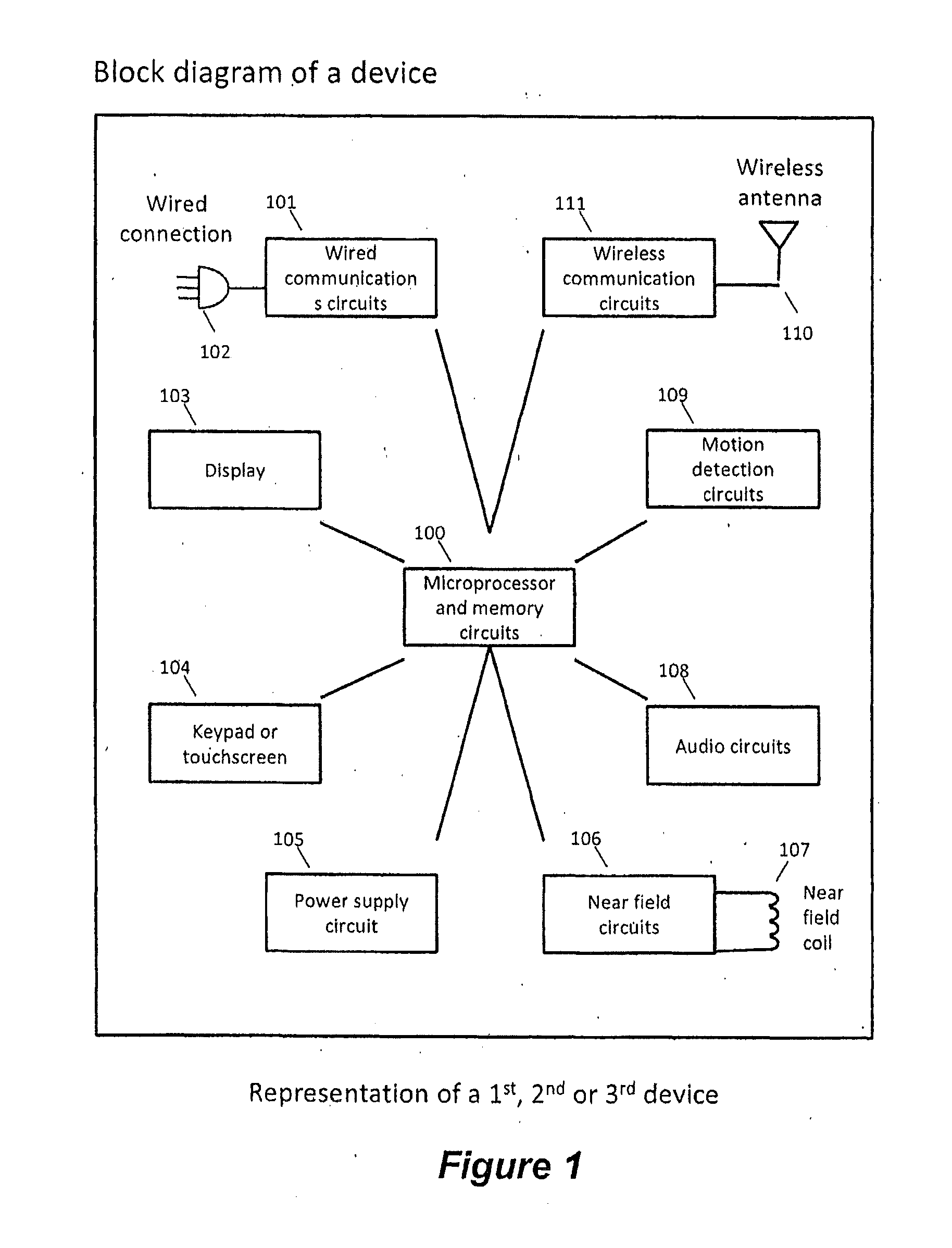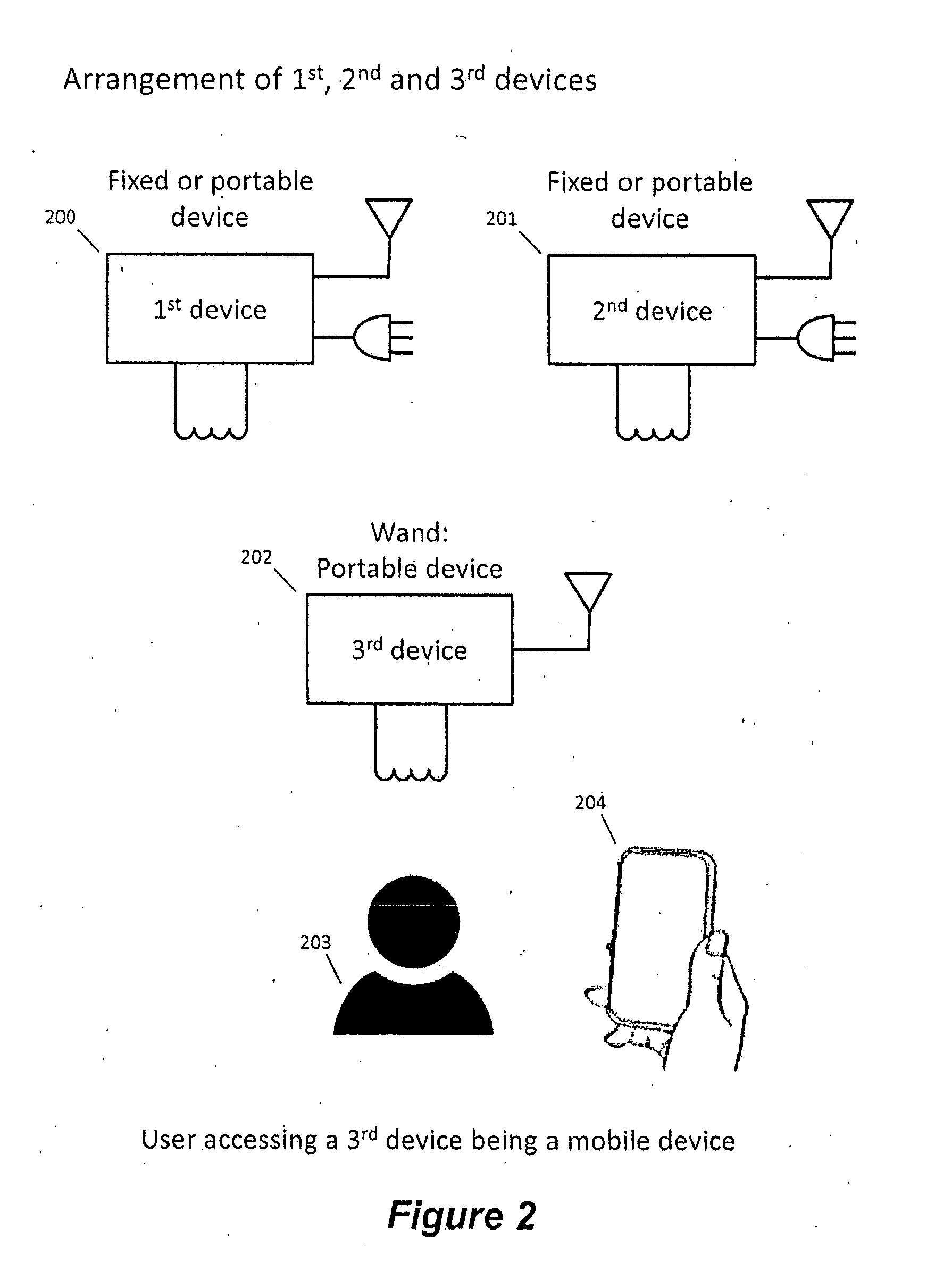Method and apparatus for forming associations and communicating between devices
a technology of association and communication, applied in the field of near field communication, can solve the problems of limiting the ability to perform a near field communication tap action between fixed and mobile devices, affecting the application and use of near field systems, and not being conveniently accessible, so as to achieve greater power transfer efficiency, less cost, and power. the effect of more power
- Summary
- Abstract
- Description
- Claims
- Application Information
AI Technical Summary
Benefits of technology
Problems solved by technology
Method used
Image
Examples
Embodiment Construction
[0281]FIG. 1 Illustrates a Block Diagram of a Device.
[0282]A device can be a controller, an appliance or a wand. A device can be fixed or mobile and can represent one or more first, second or third devices.
[0283]A device is a collection of electronic circuits and can comprise of microprocessor and memory circuits 100.
[0284]The device can also include wired communication circuits 101 with the ability to connect to a data conductor using wired connection 102. Examples of a wired connection could be 110V or 240V mains power, an RS485 serial, USB, one wire, or the like, either hard wired or via a connector.
[0285]The device can also include a user interface display 103, user interface keypad or touchscreen 104, power supply circuits 105 which might be sourced from low voltage DC circuits, mains voltage supply, battery circuits, super cap, wireless charge circuits, or the like.
[0286]The device can also include near field circuits 106 with near field coil 107 for power or data transfer whe...
PUM
 Login to View More
Login to View More Abstract
Description
Claims
Application Information
 Login to View More
Login to View More - R&D
- Intellectual Property
- Life Sciences
- Materials
- Tech Scout
- Unparalleled Data Quality
- Higher Quality Content
- 60% Fewer Hallucinations
Browse by: Latest US Patents, China's latest patents, Technical Efficacy Thesaurus, Application Domain, Technology Topic, Popular Technical Reports.
© 2025 PatSnap. All rights reserved.Legal|Privacy policy|Modern Slavery Act Transparency Statement|Sitemap|About US| Contact US: help@patsnap.com



